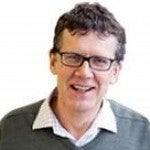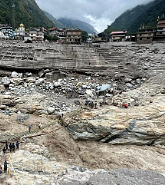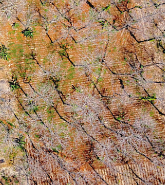This was the first time I’d ever heard a Prime Minister praising the benefits of “risk mapping.” Mid-morning on Thursday November 3 in a vast tent in the heart of New Delhi, the Indian Prime Minister, Narendra Modi, was delivering an introductory address to welcome four thousand delegates to the 2016 Asian Ministerial Conference on Disaster Risk Reduction.
Modi mentioned his own personal experience of disaster recovery after the 2001 Gujarat earthquake in which more than 12,000 people died, before presenting a ten-point plan of action in response to the 2015 Sendai Framework for disaster risk reduction. There were no guarantees of new regulations or changes in policy, but three of his ten points were particularly substantive.
First there was a call for appropriate protections to be applied to all government sponsored construction of infrastructure or housing against the relevant hazards at that location. Second he called for “work towards” achieving universal “coverage” (insurance if not by name?) against disasters– from the poorest villager to big industries and state governments. Third he called for standardized hazard and risk mapping to be developed not only for earthquake but for other perils: chemical hazards, cyclones, all varieties of floods and forest fires.
More Economic Development Means More Exposure to Risk
India is at a development threshold, comparable to that reached by Japan at the end of the 1950s and China in the 1990s. Rapid economic growth has led to a dramatic expansion of building and value in harm’s way and there now needs to be a significant compensatory focus on measures to reduce risk and expand protections, whether through insurance systems or flood walls. Development in India has been moving too fast to hope that adequate building standards are being consistently followed – there are not enough engineers or inspectors.
The Chennai floods at the end of 2015 have come to highlight this disaster-prone landscape. Heavy end-of-year monsoonal downpours fell onto saturated ground after weeks of rainfall, which were then ponded by choked drainage channels and illegal development, swamping hundreds of thousands of buildings along with roads and even the main airport. The city was cut off and economic losses totaled billions of U.S. dollars, with more than 1.8 million people being displaced.
Sorting out Chennai will take co-ordinated government action and money: to implement new drainage systems, relocate or raise those at highest risk and apply flood zonations. Chennai provides a test that Disaster Risk Reduction really is a priority, as Mr. Modi’s speech suggested. The response will inevitably encounter opposition, from those who cannot see why they should be forced to relocate or pay more in their taxes to construct flood defenses.
The one community notably missing from Prime Minister Modi’s call to action was the private sector, even though a pre-conference session the day before, organized by Federation of Indian Chambers of Commerce (FICCI), had identified that 80% of construction was likely to be privately financed.
I gave two talks at the conference – one in the private sector session – on how modelers like RMS have taken a lead in developing those risk maps and models for India, including high resolution flood models that will help extend insurance. Yet armed with information by which to differentiate risk and identify the hot spots, the government may need to step in and provide its own coverages for those deemed too high risk by private insurers.
Auditing Disaster Risk Reduction with Cat Models
In a side meeting at the main conference I presented on the need to have independent risk audits of states and cities, to measure progress in achieving their disaster risk reduction goals, in particular when it comes to earthquake mortality – for which experience from the last few decades gives no perspective on the true risk of potentially large and destructive future earthquakes happening in India – this is where probabilistic catastrophe models are invaluable. The Nepal earthquake of 2015 has highlighted the significant vulnerability of ordinary brick and concrete buildings in the region.
I came away seeing the extraordinary opportunity to reduce and insure risk in India, if ten-point lists can truly be converted into co-ordinated action.
Meanwhile as a test of the government’s resolve in the days leading up to the conference, Delhi was shrouded in its worst ever smog: a toxic concoction of traffic fumes, coal smoke, and Diwali fireworks, enriched to extremely dangerous levels in micro-particles, a smog so thick and pervasive that it seeped inside buildings, so that several attendees asked why the toxic smog was not itself being classified and treated as a true “manmade disaster.”






